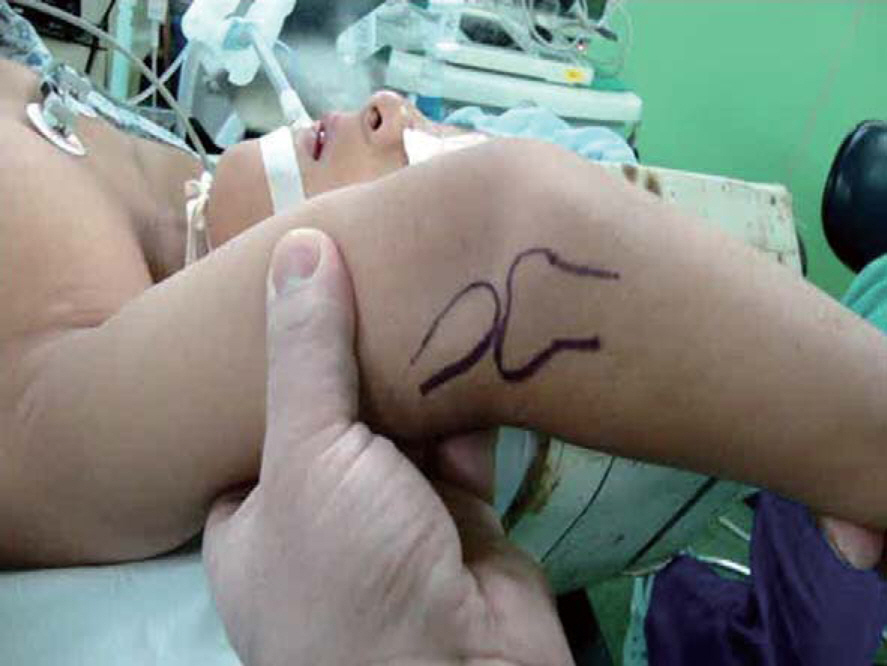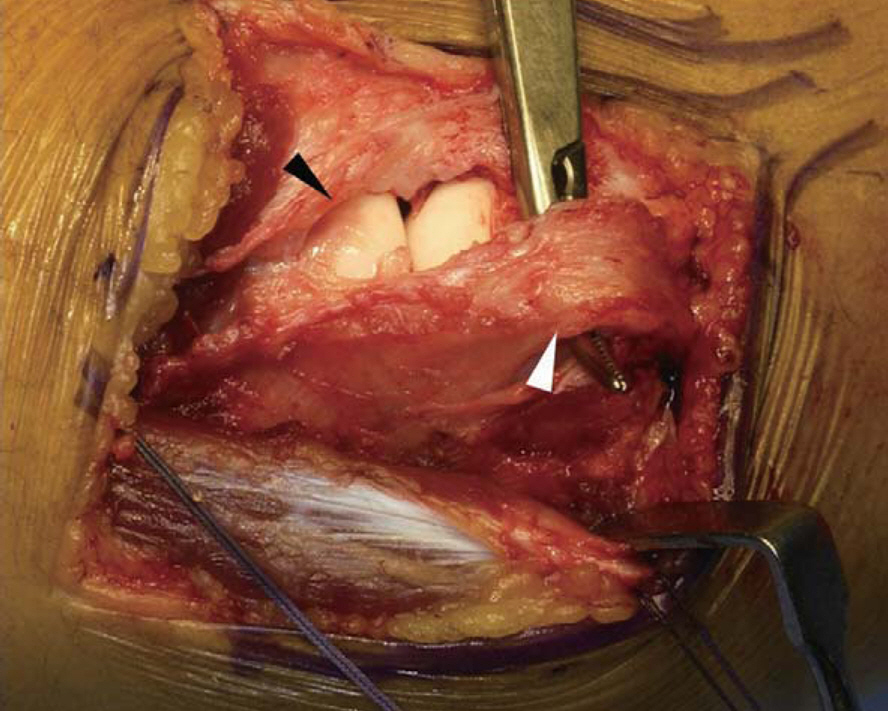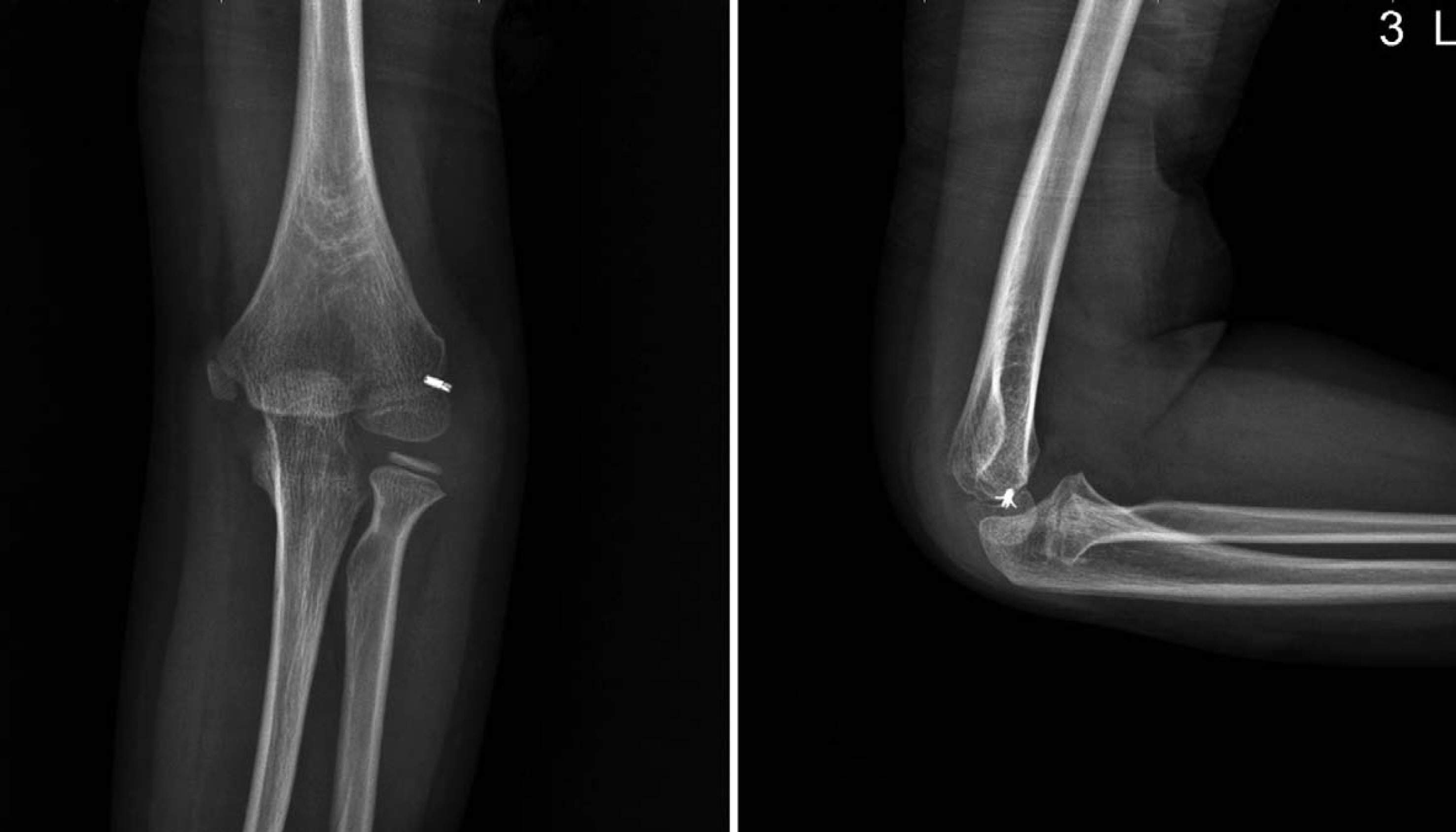J Korean Soc Surg Hand.
2014 Sep;19(3):150-153. 10.12790/jkssh.2014.19.3.150.
Posterolateral Rotatory Instability of the Elbow without Epiphyseal Injury in Children
- Affiliations
-
- 1Department of Orthopedic Surgery, Incheon St. Mary's Hospital, The Catholic University of Korea, Incheon, Korea.
- 2Department of Orthopedic Surgery, Bucheon St. Mary's Hospital, The Catholic University of Korea, Bucheon, Korea. changhoonj@naver.com
- KMID: 2194137
- DOI: http://doi.org/10.12790/jkssh.2014.19.3.150
Abstract
- Posterolateral rotatory instability of the elbow in the absence of epiphyseal injury is extremely rare in children. We present a case of 12-year-old child in whom recurrent dislocation of the elbow was associated with a stretched lateral ulnar collateral ligament. We performed surgical repair and reefing of a stretched lateral ulnar collateral ligament by using a suture anchor and a continuous locking suture in order to avoid donor site morbidity and damage of the growth plate, which could occur when a transosseous tunnel for reconstruction was made. At 12 months after operation, satisfactory symptom relief was observed with no evidence of recurrence.
MeSH Terms
Figure
Reference
-
1. Clough TM, Javed A, Bale RS. Recurrent elbow instability in a child: a case report. J Shoulder Elbow Surg. 2000; 9:441–2.
Article2. Faber KJ, King GJ. Posterior capitellum impression fracture: a case report associated with posterolateral rotatory instability of the elbow. J Shoulder Elbow Surg. 1998; 7:157–9.
Article3. Jeon IH, Micic ID, Yamamoto N, Morrey BF. Osborne-cotterill lesion: an osseous defect of the capitellum associated with instability of the elbow. AJR Am J Roentgenol. 2008; 191:727–9.
Article4. Lattanza LL, Keese G. Elbow instability in children. Hand Clin. 2008; 24:139–52.
Article5. O'Driscoll SW, Spinner RJ, McKee MD, et al. Tardy pos terolateral rotatory instability of the elbow due to cubitus varus. J Bone Joint Surg Am. 2001; 83:1358–69.6. Magra M, Caine D, Maffulli N. A review of epidemiology of paediatric elbow injuries in sports. Sports Med. 2007; 37:717–35.
Article7. O'DriscoU SW, Bell DF, Morrey BF. Posterolateral rotatory instability of the elbow. J Bone Joint Surg Am. 1991; 73:440–6.8. Blount WP. Fractures in children. Baltimore: Williams &Wilkins;1955. p. 26–7.9. Capo J, Khamsi B, Nourbakhsh A. Posterolateral instability of the elbow in an adolescent boy with a lateral epicondyle fracture: a case report. Hand (N Y). 2011; 6:71–5.
Article10. Morrey BF. The elbow. Philadelphia: Lippincott Williams &Wilkins;2002. p. 249–50.
- Full Text Links
- Actions
-
Cited
- CITED
-
- Close
- Share
- Similar articles
-
- Delayed Posterolateral Rotatory Instability of the Elbow after Cubitus Varus : A Case Report
- Posterolateral Rotatory Instability of the Elbow Joint
- Treatment of Posterolateral Rotatory Instability of the Knee
- Prosthetic resurfacing of engaging posterior capitellar defects in recurrent posterolateral rotatory instability of the elbow
- Clinical Outcomes of Arthroscopic Debridement for Lateral Epicondylitis with Partial Injury of the Lateral Collateral Ligament Complex






